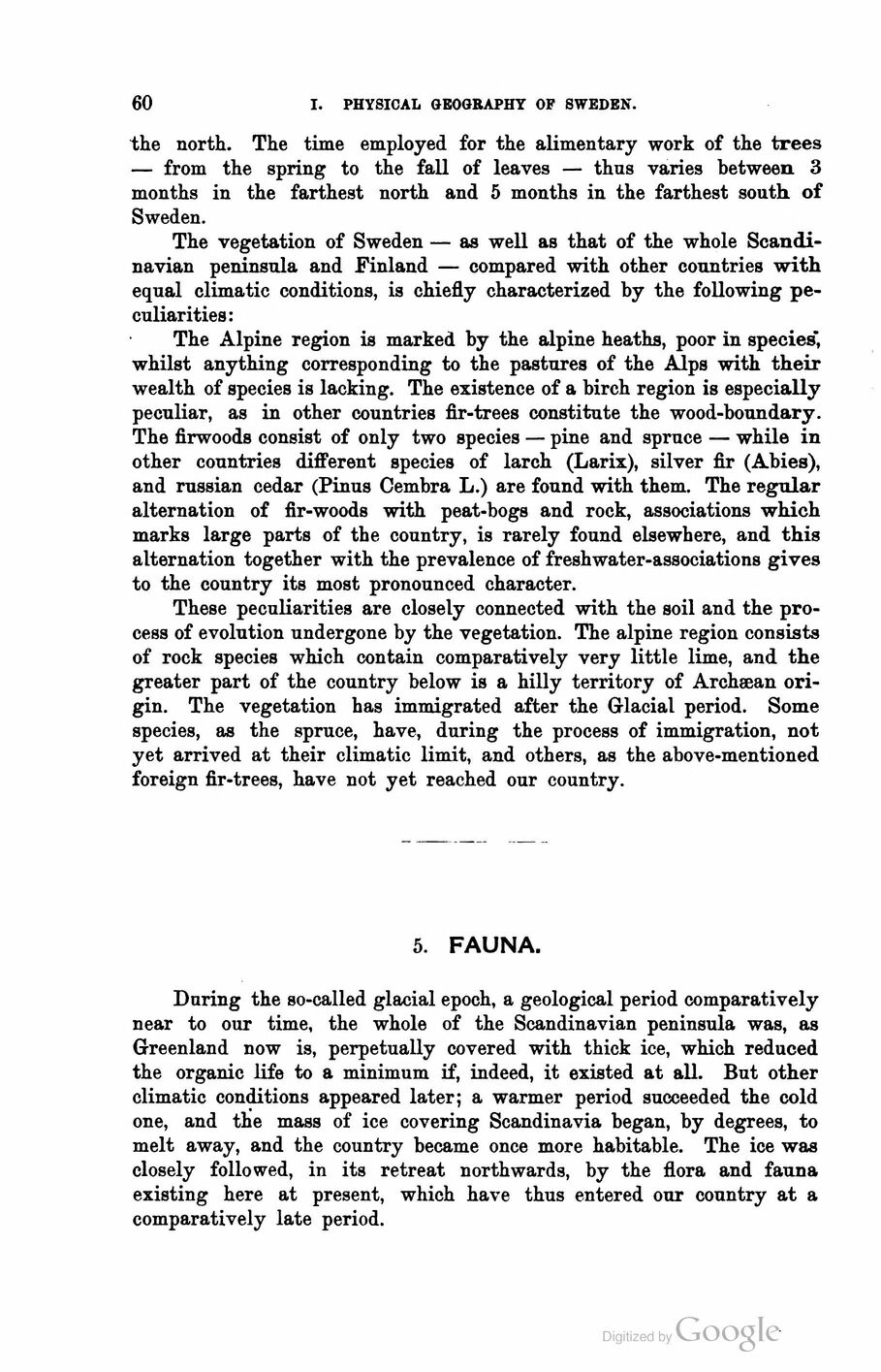
Full resolution (JPEG) - On this page / på denna sida - First part - I. Physical Geography - 4. Vegetation. By Lector A. Nilsson, Ph. D., Institute of Forestry, Stockholm - 5. Fauna. By Prof. T. Tullberg, Ph. D., Uppsala

<< prev. page << föreg. sida << >> nästa sida >> next page >>
Below is the raw OCR text
from the above scanned image.
Do you see an error? Proofread the page now!
Här nedan syns maskintolkade texten från faksimilbilden ovan.
Ser du något fel? Korrekturläs sidan nu!
This page has never been proofread. / Denna sida har aldrig korrekturlästs.
60
I. PHYSICAL GEOGRAPHY OF SWEDEN.
the north. The time employed for the alimentary work of the trees
— from the spring to the fall of leaves — thus varies between 3
months in the farthest north and 5 months in the farthest south of
Sweden.
The vegetation of Sweden — as well as that of the whole
Scandinavian peninsula and Finland — compared with other countries with
equal climatic conditions, is chiefly characterized by the following
peculiarities:
The Alpine region is marked by the alpine heaths, poor in species’,
whilst anything corresponding to the pastures of the Alps with their
wealth of species is lacking. The existence of a birch region is especially
peculiar, as in other countries fir-trees constitute the wood-boundary.
The firwoods consist of only two species — pine and spruce — while in
other countries different species of larch (Larix), silver fir (Abies),
and russian cedar (Pinus Cembra L.) are found with them. The regular
alternation of fir-woods with peat-bogs and röck, associations which
marks large parts of the country, is rarely found elsewhere, and this
alternation together with the prevalence of freshwater-associations gives
to the country its most pronounced character.
These peculiarities are closely connected with the soil and the
process of evolution undergone by the vegetation. The alpine region consists
of röck species which contain comparatively very little lime, and the
greater part of the country below is a hilly territory of Archæan
origin. The vegetation has immigrated after the Glacial period. Some
species, as the spruce, have, during the process of immigration, not
yet arrived at their climatic limit, and others, as the above-mentioned
foreign fir-trees, have not yet reached our country.
5. FAUNA.
During the so-called glacial epoch, a geological period comparatively
near to our time, the whole of the Scandinavian peninsula was, as
Greenland now is, perpetually covered with thick ice, which reduced
the organic life to a minimum if, indeed, it existed at all. But other
climatic conditions appeared later; a warmer period succeeded the cold
one, and the mass of ice covering Scandinavia began, by degrees, to
melt away, and the country became once more habitable. The ice was
closely followed, in its retreat northwards, by the flora and fauna
existing here at present, which have thus entered our country at a
comparatively låte period.
<< prev. page << föreg. sida << >> nästa sida >> next page >>